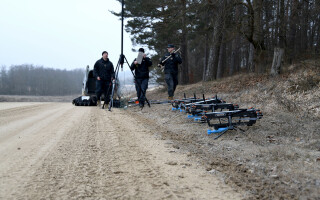Radar displays for Thai air force get upgrade from Cambridge Pixel
NewsMay 28, 2015

BANGKOK, Thailand. Cambridge Pixel was selected by engineers at the Royal Thai air force (RTAF) headquarters at Don Muang Airbase, Bangkok, Thailand to upgrade its radar display technology and air defense processing at several strategic sites across their country -- such as air force bases and training facilities -- without replacing the existing and expensive radar sensors.
A key requirement from RTAF was use commercial-off-the-shelf (COTS) products to reduce long-term maintenance costs while adding new tracking, safety, and display features such as delivering improved target tracking from both the primary and identification friend or foe (IFF) sensors, track fusion, safety alerts, and then presentation of the integrated data on a large, clear plan position indicator (PPI) display on top of user-selectable maps.
“We were very pleased with Cambridge Pixel," says RTAF Group Captain Thouchpong. "Their engineers understood what we needed and provided excellent support during the installation and deployment of the first two sites at Udon Thani and Nakhon Pathom. We now have an upgraded capability based on COTS products, which promises reduced long-term maintenance costs. We are looking forward to continuing the collaboration by upgrading the air defense systems at our other airbase facilities.”
Cambridge Pixel engineers delivered its radar processing and tracking products which interface to the current primary and secondary IFF radars to enable upgraded target tracking from the primary and IFF sensors and fusion into a single track source. The display is managed by Cambridge Pixel’s ASD-100 air situation display software, which enables an integrated display picture of primary and secondary video and tracks that are then overlaid on maps. The software runs on standard PC hardware, which reduces system maintenance costs.
Cambridge Pixel’s hardware-agnostic SPx suite of software libraries and applications are used in radar visualization, radar video distribution, plot extraction, target tracking, and fusion. The company’s ASD-100 air situation display gives operators an integrated picture of everything in the skies -- military or commercial air traffic, friend or foe. This application can then interface to a variety of different ASTERIX data inputs such as CAT-240 (radar video), CAT-48 (track reports) and CAT-4 (safety alert messages). Safety alerts such as short term conflict alerts, area proximity warnings, and minimum safety altitude warnings may be sent to the ASD-100 display using the company’s SPx SafetyNet server application.
For more information about Cambridge Pixel, visit www.cambridgepixel.com or call: +44 (0) 1763 852749 or email: [email protected].






